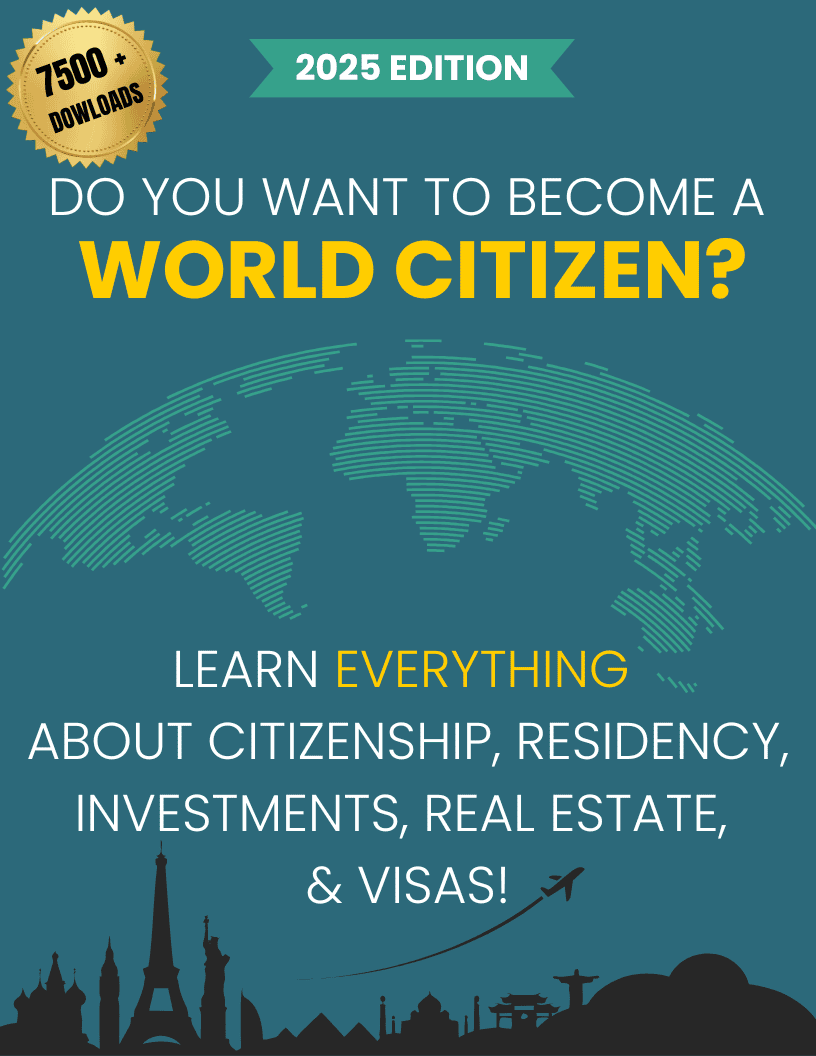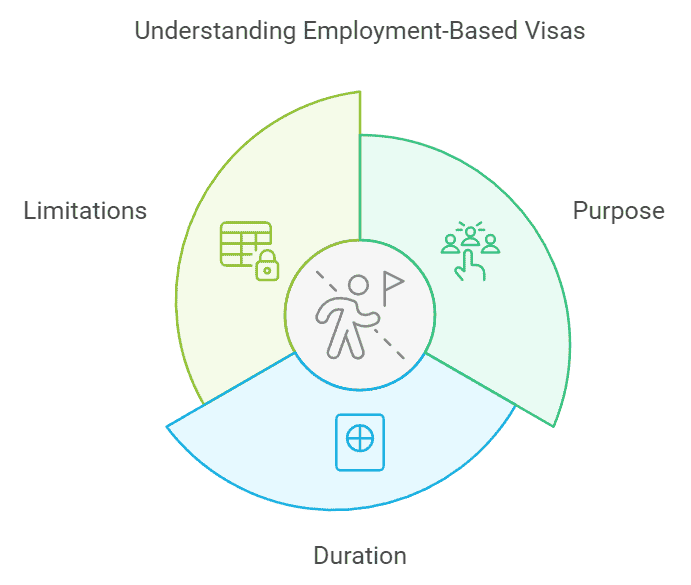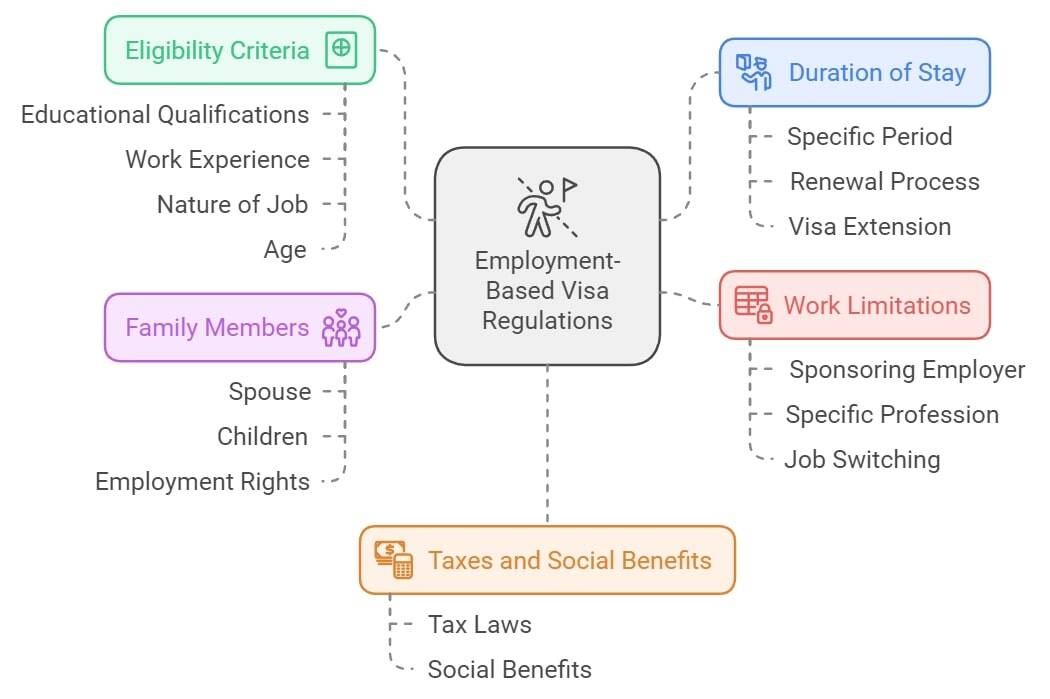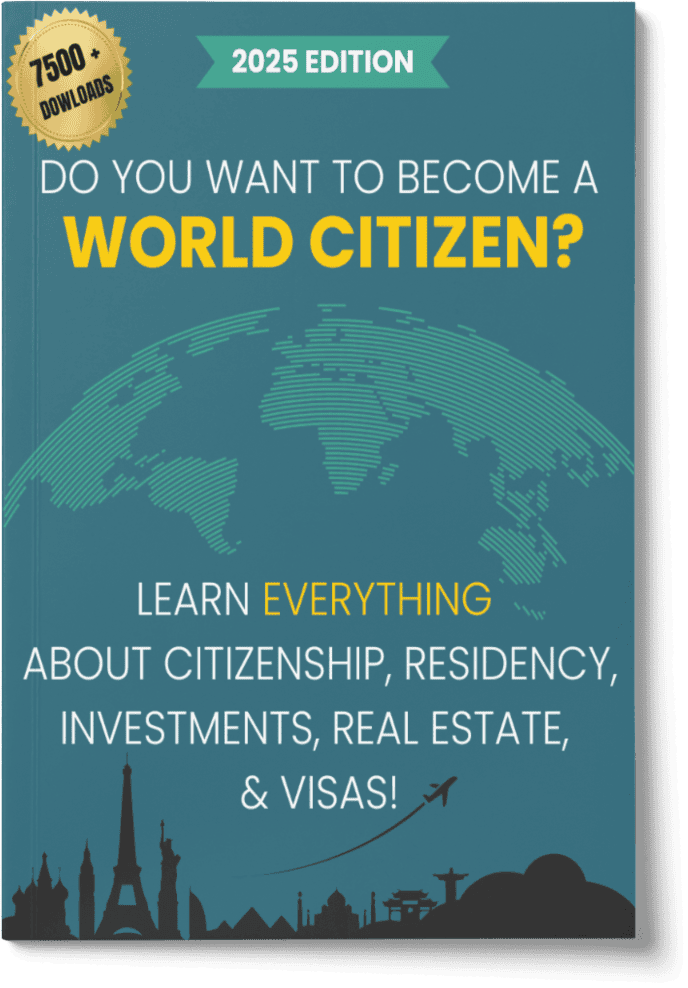Employment-Based Visas
Boost Your Freedom Without Compromise.
- Who offers the CHEAPEST program available.
- Who offers the BEST program available.
- What you need to qualify?

- Employment-based visas cover categories like the H-1B for specialty occupations in the U.S., the Canadian Express Entry for skilled workers, and similar categories in other countries.
- Qualification depends on job offers, skill levels, and sometimes labor market tests.
- The application process involves both the employer and the employee, with labor certifications and proof of qualifications.
- Dependents may accompany the primary visa holder under derivative visa statuses.
- These visas can offer a pathway to permanent residency, contingent on meeting certain criteria and the host country's immigration policies.
Have you ever wondered how employment-based visas can open doors to global opportunities?
Working abroad has become a dream for many professionals in an increasingly interconnected world.
In This Article, You Will Discover:
Understanding the nuances of these visas is the first step towards realizing that aspiration.
Let’s unravel the essentials of securing your ticket to a worldwide career...
- Who offers the CHEAPEST program available.
- Who offers the BEST program available.
- What you need to qualify?
 Free Consultation
Free Consultation Easy to Use
Easy to Use 100% Safe & Secure
100% Safe & Secure
Employment-Based Visas: An Overview
In a world where talents know no boundaries, employment-based visas emerge as the portals connecting skills to international demand.
These visas are meticulously designed to foster knowledge exchange, address workforce gaps, and drive economic advancement across borders.
This type of visa could be for you if you’re:
- an aspiring entrepreneur with innovative ideas.
- a seasoned professional with specialized expertise.
- a visionary artist seeking a new canvas.

Purpose
According to our expert team, the purpose of employment-based visas is to facilitate the exchange of specialized skills and talents across international borders.
This visa type should not be confused with work visas, as there are significant differences.
Employment-based visas are tailored to address the specific needs of host countries by attracting professionals, entrepreneurs, and artists who can contribute to their economies, innovation landscapes, and cultural diversity.
Duration
Depending on the nation and the particular visa category, employment-based visas can last anywhere from 1 year to a lifetime.
These visas offer a spectrum of options, from short-term work permits allowing you to contribute your expertise for a defined period to more enduring pathways leading to permanent residency.
Limitations
Amidst employment-based visa opportunities, they also come with certain limitations.
These visas are typically linked to a specific job, employer, or industry, meaning your stay is contingent on your continued employment within those parameters.
Furthermore
Switching employers or fields might involve navigating additional visa processes.
Some countries impose quotas or preferences for certain sectors, influencing the availability of employment-based visas in those industries.
Employment-Based Visa Application Process
Applying for an employment-based visa is a multi-step process that requires careful attention to detail.
Understanding the various components involved, from consular processing to online travel authorization, can make the journey go much more smoothly.
Learn More: Visa Application Process
Top 5 Global Regions for Employment-Based Visas
Every country has different types of employment-based visas, and some countries have more than others.
Below, our experts have summarized 5 regions and their equivalent employment-based visas.

Let’s take a quick look.
UK Employment-Based Visas
In the UK, there are various types of employment-based visas to choose from.
Here’s a list of their types:
- Skilled Worker Visa: For individuals who have been offered a skilled job.1
- Intra-company Transfer Visa: Employees of multinational corporations transferred to a UK branch are eligible for an intra-company transfer visa.
- Global Talent Visa: Available to people who work in a qualifying field and have been recognized as established or upcoming leaders.
- Innovator Visa: For those starting or operating a business in the UK who have received approval from an authorized body.
- Start-up Visa: For people starting a business in the UK for the first time and endorsed by a UK higher education institution or a business organization.
- Health and Care Worker Visa: For qualified doctors, nurses, and health professionals.
Learn More: UK Employment-Based Visas
Canadian Employment-Based Visas
Canada offers 6 subcategories of employment-based visas.
Let’s take a look:
- Federal Skilled Worker Program (FSWP): A component of the Express Entry immigration system for skilled workers with international experience.
- Federal Skilled Trades Program (FSTP): For skilled craftspeople with expertise in a few professions.
- Canadian Experience Class (CEC): For those who have recent work experience in Canada.
- Provincial Nominee Program (PNP): Provinces may suggest people for immigration based on regional labor market demands.
- Temporary Foreign Worker Program (TFWP): Allows employers to hire foreign nationals to do temporary labor and fill skill shortages.
- International Mobility Program (IMP): Employers may use foreign workers under this program without conducting a Labor Market Impact Assessment (LMIA).
Learn More: Canada’s Employment-Based Visas
Australian Employment-Based Visas
So, our expert advice to you if you want to go to Australia on an employment-based visa is to select one of the following visas.2
Here’s a list you should look into:
- Temporary Skill Shortage (TSS) Visa (Subclass 482): An employer can sponsor a skilled worker if they can’t find an appropriately skilled Australian worker.
- Employer Nomination Scheme (Subclass 186): Permanent visa for skilled foreign workers or skilled temporary residents living and working in Australia.
- Regional Sponsored Migration Scheme (Subclass 187): For individuals who live in regions with low population growth or regionally.
- Skilled Independent Visa (Subclass 189): This is a point-tested visa for skilled workers not sponsored by an employer, state, territory, or family member.
Learn More: Australia's Employment-Based Visas
Schengen Region Employment-Based Visas
The Schengen Area consists of 26 European countries, and while there's harmonization for short-term visas, employment visas are managed by individual countries.3
However, some general visa types are:
- EU Blue Card: For non-EU citizens who have higher professional qualifications and a binding job offer or a valid work contract in an EU country.
- Work Permit: A job offer and sponsorship from a local employer are usually required. The specific rules, requirements, and application process will differ depending on the country.
- Self-Employment Visas: Some countries offer visas for entrepreneurs or people who want to start a business.
Learn More: Schengen Region Employment-Based Visas
United States Employment-Based Visas
The US, like the other regions, also has a few options.
Here’s a list to outline the subtypes of employment-based visas:
- EB-3: For skilled workers with at least 2 years of experience or training.
- EB-1A: For individuals with exceptional ability in the sciences, arts, education, business, or athletics.
- EB-5: Immigrant Investor Program for individuals investing significant capital in US businesses that create jobs.
- E-2: This is a treaty investor visa for investors from countries with a treaty of commerce and navigation with the US.
- EB-2: For people with advanced degrees or exceptional ability in the sciences, arts, or business. The national interest waiver falls under this category, where certain individuals can petition for green card status without employer sponsorship.
Learn More: US Employment-Based Visas
Employment-Based Visa General Rules & Regulations
Every employment-based visa has its own unique set of rules and regulations.

Please note that these rules and regulations are country-specific, so refer to our country-specific articles to gain more insight.
But there are some common themes you should be aware of:
- Eligibility criteria: Regardless of the country, every visa type has a set of prerequisites. These could range from educational qualifications, work experience, the nature of the job, or even your age.
- Duration of stay: Employment visas are usually granted for a specific period, after which they must be renewed or changed to another type of visa or status. Always be conscious of the expiration date and understand the visa extension process.
- Work limitations: Some employment visas may restrict the holder to working only for the sponsoring employer or in a particular profession. Switching jobs may require a new visa or permission from immigration authorities.
- Family members: Employment visas often allow the primary visa holder's immediate family members (spouse and children) to accompany them. However, rules on whether these family members can seek employment in the host country vary.
- Taxes and social benefits: Working in a foreign country often means abiding by its tax laws. Additionally, visa holders may have rights to certain social benefits, which vary by country and visa type.
Employment-Based Visa Country-Specific Regulations
Each country's approach to employment-based visas reflects its economic needs, labor market conditions, and foreign relations.
Here are some general considerations:
- Quotas: Countries like the US have annual caps on certain employment visa categories. It means a maximum number of visas are issued each year, leading to intense competition and, sometimes, long waiting times.
- Priority occupations: Countries such as Australia and Canada have lists of priority occupations—fields with a notable shortage of skilled professionals. Being in one of these professions might streamline your visa application process.
- Path to permanent residency: Some countries offer employment visas as a pathway to permanent residency or citizenship. Understand the potential for long-term stay and the requirements involved.
Employment-Based Visa Entry & Exit Requirements
Once you've secured an employment-based visa, ensure smooth travel with these entry and exit considerations.
We’ve listed 5 considerations below:
- Port of entry interviews: Upon arrival, you'll likely face an interview with immigration officers. Be prepared with all necessary documents and be ready to answer questions about your employment, duration of stay, and more.
- Visa validity vs. duration of stay: A visa's validity might differ from the actual allowed duration of stay. For instance, a visa might be valid for a year but only permit a 90-day stay at a time.
- Multiple entries: Depending on your visa type, you might be allowed multiple entries into the country during its validity. For business people who travel frequently, this is helpful.
- Exit visas: Some countries require an exit visa to leave. Always check the requirements before making travel plans.
- Overstays: Exceeding your visa's duration can lead to bans, fines, and complications in future visa applications. Always be cautious about visa expiration dates.
Common Questions
How Long Does It Take To Get an Employment-Based Visa?
How Many Employment-Based Green Cards Does The US Issue Each Year?
Do I Need a Job Offer to Get an Employment-Based Visa?
What Are the Requirements for an EU Blue Card?
How Do I Renew or Extend My Employment Visa?
Can My Family Join Me on My Employment-Based Visa?
How Does an Employment-Based Visa Differ from a Work Visa?
In Conclusion
Navigating the world of employment-based visas can indeed seem daunting with its myriad rules and regulations.
Yet, with proper guidance and understanding, it becomes a bridge to endless global opportunities, enriching professional experiences, and cross-cultural exchanges.
Whether you're an employer or an aspirant seeking work abroad, staying informed and proactive is the key.
We wish you safe travels and successful employment-based ventures!
Learn More: What are Business Visas?
- Who offers the CHEAPEST program available.
- Who offers the BEST program available.
- What you need to qualify?
 Free Consultation
Free Consultation Easy to Use
Easy to Use 100% Safe & Secure
100% Safe & Secure







